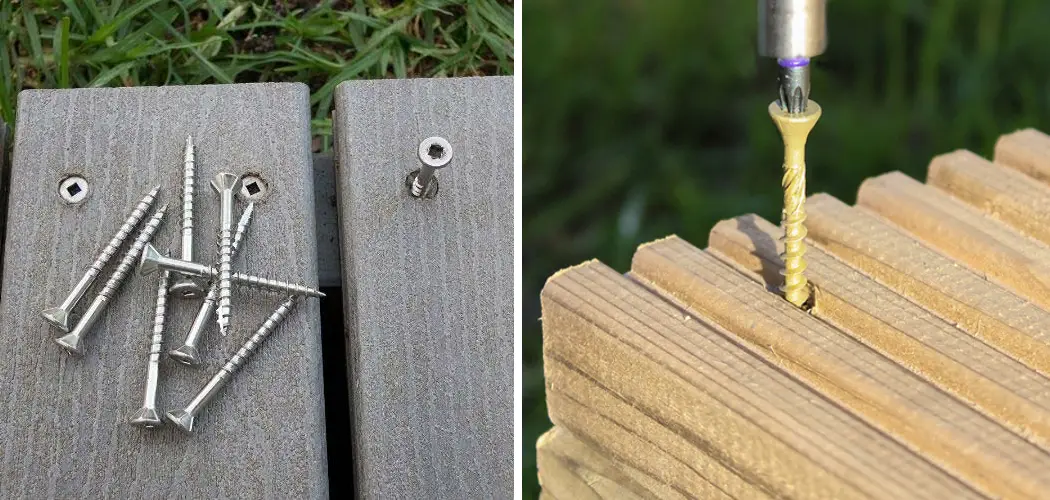Are you tired of dealing with stubborn composite deck screws that refuse to budge? Removing composite deck screws can be a frustrating task, especially when they become rusted or stripped. However, with the right techniques and tools, you can successfully extract these screws and restore your deck’s beauty.
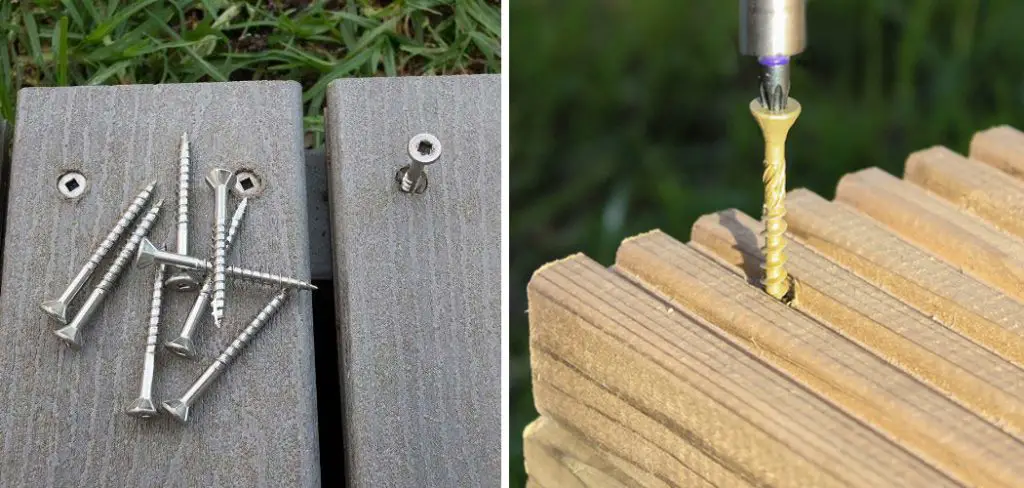
In this article, we will guide you through the process of how to remove composite deck screws step by step. From choosing the right tools, such as a drill/driver and screw extractor, to employing effective methods like applying lubrication and using leverage, we will cover everything you need to know.
Whether you’re a DIY enthusiast or a homeowner looking to tackle this project, our comprehensive guide will help you remove composite deck screws effortlessly and efficiently, allowing you to enjoy your deck to the fullest. So let’s dive in and make the process of removing those pesky screws a breeze!
What Is the Best Tool to Remove Deck Screws?
When it comes to removing composite deck screws, choosing the right tool is key. You’ll need a drill/driver with a robust torque setting and reversible speed control, as well as a screw extractor that is compatible with the size of your screws.
The drill/driver will be used to loosen the screws from their holes, while the screw extractor will be used to remove them. This combination of tools is essential to ensure that you don’t damage your deck while removing the screws.
If you don’t have access to a drill/driver and screw extractor, or if the screws are too deeply embedded in the composite material, consider using an impact wrench. This tool will generate enough torque to loosen and remove even the most stubborn deck screws.
How Do You Remove a Stripped Deck Screw?
If the composite deck screw is stripped or corroded, then it may require some extra attention when extracting it from its hole. One of the best solutions for removing a stripped deck screw is to use a pair of locking pliers. First, place the lower jaw of the pliers on the head of the screw, then grip tightly. This will create friction and give you a better chance of unscrewing it from its hole.
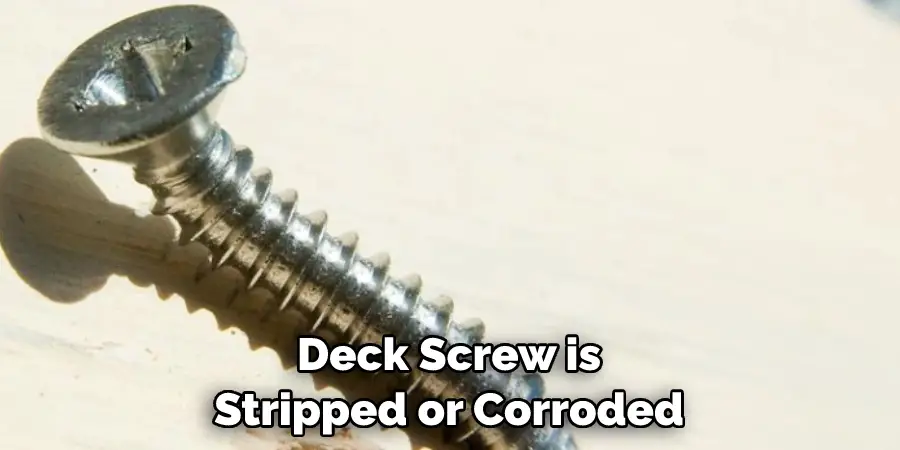
If that doesn’t work, you may need to try an extractor tool. An extractor is a specialized bit that has a sharp reverse thread on it, allowing it to grip the stripped screw and remove it from its hole. You’ll start by drilling a small pilot hole into the head of the screw with a relatively small drill bit. Then you’ll use your extractor tool to carefully remove the screw.
Finally, if all else fails, you may need to use a hacksaw blade or drill bit to cut off the head of the screw so that it can be pulled out by hand. It’s important to be very careful when trying this method, as it can cause damage to other parts of your composite deck if you’re not careful. If the screw is stubborn, try soaking it in penetrating oil for a few hours first to help loosen it up.
10 Methods How to Remove Composite Deck Screws
1. Using a Drill/Driver
To remove composite deck screws, one of the most common methods is to use a drill/driver. Start by selecting a drill bit that matches the size of the screw head. Insert the bit into the drill and set it to reverse mode. Place the bit on the screw head and apply steady pressure while turning the drill counterclockwise. The screw should start to loosen and can be fully removed using the drill/driver.
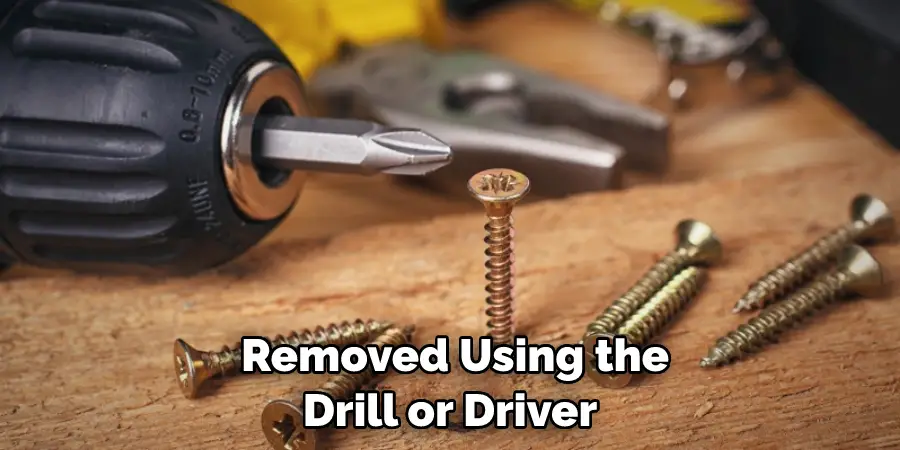
2. Applying Lubrication
If the composite deck screws are stuck or rusted, applying lubrication can help loosen them. Begin by spraying a lubricant, such as penetrating oil or WD-40, directly onto the screw head and surrounding area. Allow the lubricant to penetrate for a few minutes. Then, use a drill/driver to turn the screw counterclockwise. The lubricant will help reduce friction and make it easier to remove the screw.
3. Using a Screw Extractor
For stripped or damaged screw heads, a screw extractor can come to the rescue. Start by drilling a small pilot hole into the center of the screw head using a drill bit slightly smaller than the extractor. Insert the extractor into the pilot hole and rotate it counterclockwise using pliers or a wrench. The extractor’s reverse-threaded design will grip the screw and allow you to remove it by turning it counterclockwise.
4. Applying Heat
Heat can be an effective method for removing stubborn composite deck screws. Use a heat gun or a blowtorch to apply heat directly to the screw and surrounding area. Be cautious not to overheat or damage the surrounding decking material. The expansion caused by the heat can help break the bond between the screw and the material. Once the screw is heated, use a drill/driver to remove it while it’s still warm.
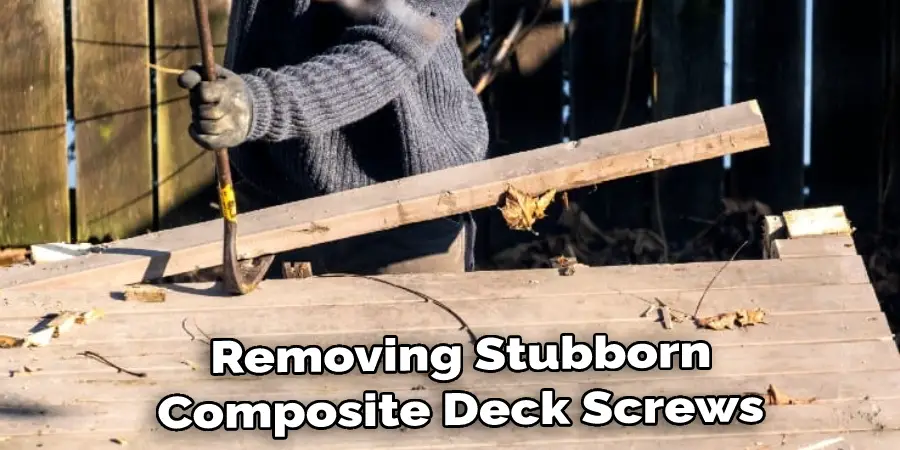
5. Freezing the Screw
If the composite deck screw is resistant to removal, you can try freezing it to make it more brittle. Apply a cold temperature to the screw by using ice cubes, a can of compressed air turned upside down, or a freezing spray. Direct the cold source onto the screw head for a few minutes, causing it to contract. This contraction may weaken the grip of the screw, making it easier to remove using a drill/driver.
6. Using Pliers or Vise Grips
In situations where the screw head is accessible, but the screw itself won’t budge, pliers or vise grips can be employed. Grip the screw head firmly with the pliers or vise grips. Apply steady and consistent pressure while turning counterclockwise. The extra leverage provided by the pliers or vise grips can help break the screw free and facilitate its removal.
7. Cutting a Slot
When the screw head is damaged or stripped, cutting a slot in the head can provide an alternative removal method. Use a rotary tool with a cutting disc or a hacksaw to carefully cut a straight slot across the screw head. Ensure the slot is wide enough for a flathead screwdriver to fit securely. Insert the screwdriver into the slot and turn counterclockwise to remove the screw.
8. Using a Hammer and Chisel
For screws that are partially embedded or difficult to access, a hammer and chisel can be employed. Position the chisel’s edge against the screw head and gently tap it with a hammer to create a small indentation. Once the indentation is created, adjust the chisel’s angle to be slightly off-center from the screw head.
Deliver firm, controlled blows with the hammer to turn the screw counter clockwise. The force applied to the chisel will transfer to the screw, causing it to rotate and loosen. Repeat this process until the screw can be easily removed by hand or with pliers.
9. Using a Screw Remover Kit
If you’re dealing with stubborn or damaged screws, a screw remover kit can be a valuable tool. These kits typically include specialized bits and extractors designed to grip and remove stuck screws.
Follow the manufacturer’s instructions to select the appropriate bit and extractor for your screw size and type. Insert the bit into a drill/driver and drill a pilot hole into the screw head. Switch to the extractor and continue drilling until it bites into the screw. Then, slowly turn the extractor counterclockwise to remove the screw.
10. Cutting or Grinding the Screw
In extreme cases where all other methods fail, cutting or grinding the screw might be necessary. Use a rotary tool with a cutting disc or a grinder equipped with a metal-cutting wheel. Carefully cut or grind a groove into the screw head, allowing for the insertion of a flathead screwdriver or a wrench. Apply downward pressure while turning counterclockwise to remove the screw. Be cautious during this process to avoid damaging the surrounding deck material.
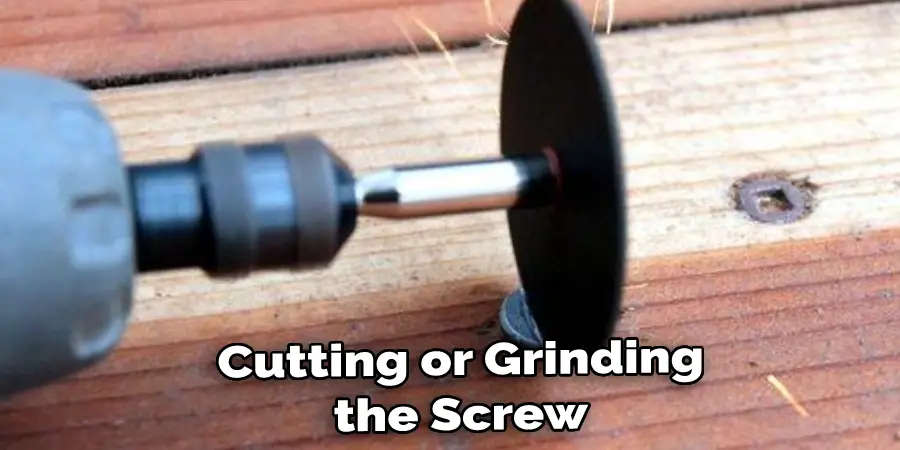
Some Common Mistakes When Removing Composite Deck Screws
1. Not Drilling a Pilot Hole:
A pilot hole should be drilled before attempting to remove composite deck screws. The pilot hole will help to separate the wood fibers and reduce the amount of torque needed to remove the screw.
2. Stripping the Screws:
When removing composite deck screws, make sure to go slowly and use the right size screwdriver bit for the job. If you try to move too quickly or use a tool that is not suited for the job, it can result in stripped screws which are much harder to remove.
3. Not Using an Extractor Tool:
An extractor tool is designed specifically for the removal of screws and bolts that have become stuck or stripped.
Conclusion
Overall, removing composite deck screws is a relatively easy process. Firstly, identify the composite screw and how it’s inserted into your decking. Once you have determined what tool is necessary for removal, make sure to protect your eyes and hands to ensure safety.
Then use either a drill, impact driver, or pliers to back out the fasteners one by one. Alternatively, if necessary, you can employ an oral remover saw blade or circular saw to remove the screws.
Finally, repair any damaged areas which may have been caused by your efforts to remove the screws with sandpaper or a file. Now that you know how to remove composite deck screws yourself with ease, why not put your newfound knowledge into practice and update your outdoor space!

